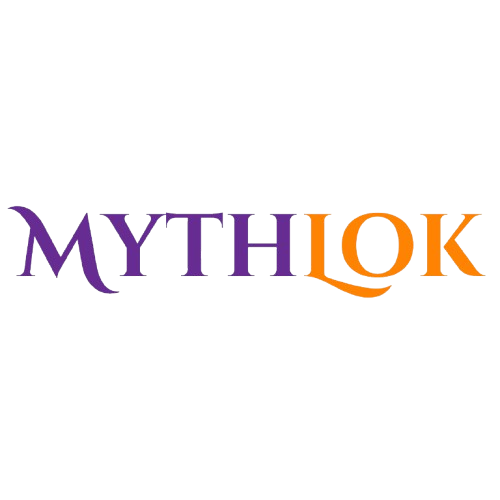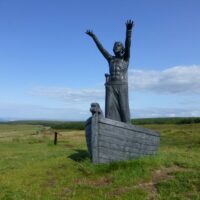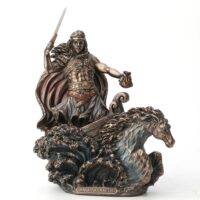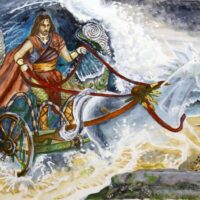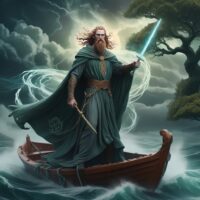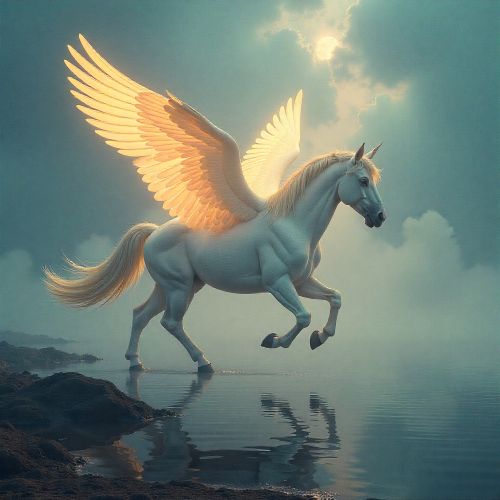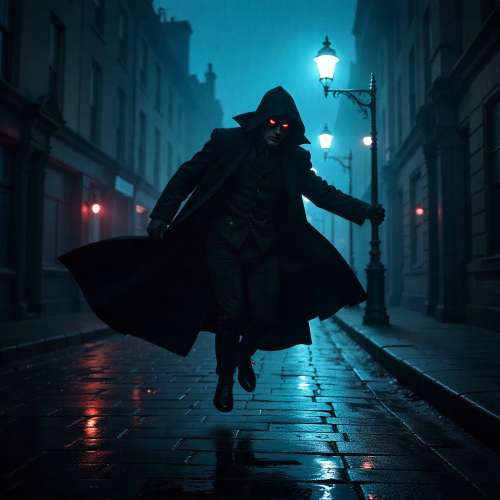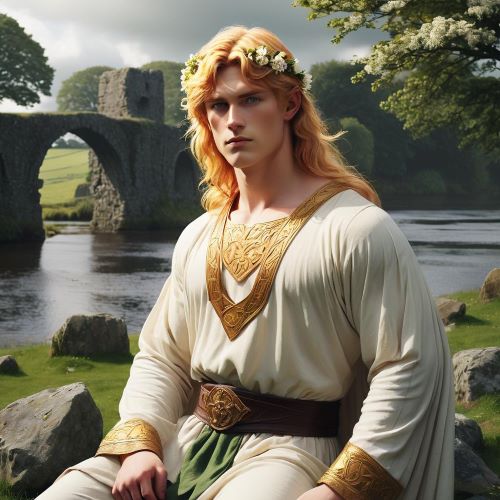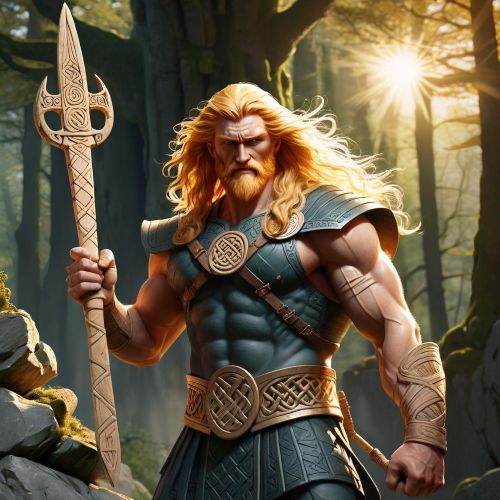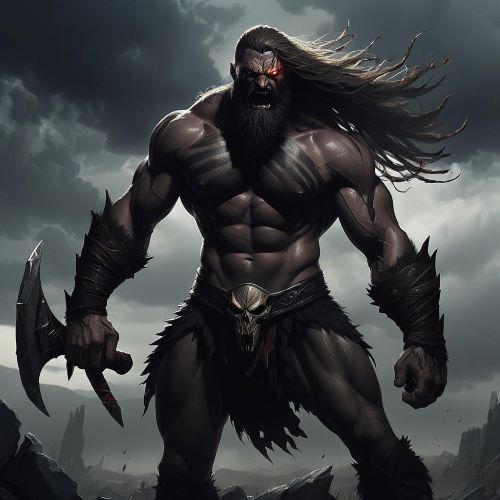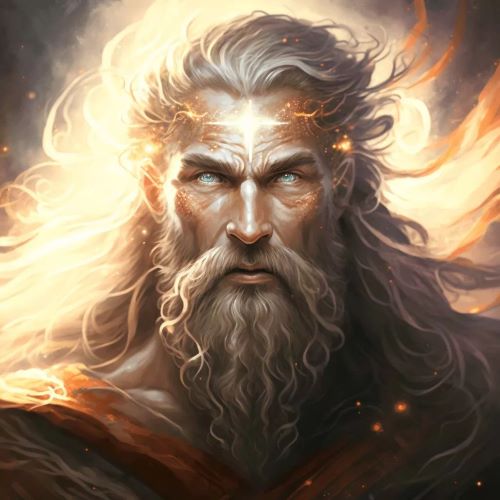Manannan Mac Lir : God of the Sea
Listen
At a glance
| Description | |
|---|---|
| Origin | Celtic Mythology |
| Classification | Gods |
| Family Members | Lir (Father), Fand, Aife, Aine (Wives), |
| Region | Ireland, Isle of Man, Scotland |
| Associated With | Sea, Weather, Otherworld |
Manannan Mac Lir
Introduction
Manannán mac Lir stands tall among the pantheon of Celtic mythology as a revered sea deity, guardian of the Otherworld, and master of illusion and transformation. His name, meaning “Son of the Sea,” echoes his deep ties to oceanic realms and mystical lands beyond mortal reach. As a prominent member of the Tuatha Dé Danann, the ancient supernatural race in Irish lore, Manannán’s presence weaves through Irish, Manx, and Scottish traditions. Often viewed as a ruler of paradisiacal realms like Emain Ablach, Mag Mell, and Tír Tairngire, he embodies the boundary between the physical world and the spiritual. Through mists and enchantments, Manannán guides souls, tests heroes, and protects the treasures of the divine.
Physical Traits
Descriptions of Manannán mac Lir vary widely, owing to his shapeshifting abilities and fluid nature. In many accounts, he manifests as a mysterious traveler wrapped in a magical cloak that shifts color like the ocean—shimmering blue-green one moment, silver or purple the next. Artistic depictions often show him with flowing hair and seaweed-draped garments, moving across the waves on his horse Aonbharr, or aboard his sentient boat, Scuabtuinne. His form ranges from the majestic to the grotesque; in folklore, he appears as a mighty centaur, a weather-worn beggar, or even a giant with a frightening visage. His connection to the Triskele, a three-legged spinning symbol seen in Manx tradition, links him to speed, motion, and cyclical balance. Whether storm-bringer or calm navigator, Manannán’s physical manifestations reflect the unpredictable, ever-changing sea.
Family
Manannán mac Lir’s familial web is vast and deeply interwoven with other deities and legendary heroes. His father, Ler, is a primordial sea god whose mantle Manannán eventually assumes. In some versions, he is the son of Elloth, making his lineage a blend of divine ancestry tied to both water and sky. As a foster-son of the Dagda, the chief of the Tuatha Dé Danann, Manannán’s nurturing role extends to others in turn—most notably Lugh Lámhfhada, the warrior of light, whom he raises and equips with powerful tools for greatness.
He is united with Fand, a goddess of beauty and sorrow, whose tragic romance with the warrior Cúchulainn ends with Manannán using his magical cloak to erase their memories. Other relationships are hinted at in lore, such as with Áine and Aife, both of whom may be seen as consorts or daughters depending on the source. His children include Mongán mac Fiachnai, a semi-divine figure said to be raised by Manannán in the Otherworld, and Clíodhna, a goddess linked to beauty and death. Through stories of mentorship, paternity, and divine romance, Manannán’s family narratives underscore his role as both protector and progenitor within the Celtic mythic tradition.
Other names
Across the Gaelic and Celtic-speaking world, Manannán mac Lir is known by numerous names and epithets that reflect his multifaceted nature and widespread reverence. In Manx tradition, he is remembered as Manannan beg mac y Leir, or “Little Manannan, son of the Sea,” a protective figure who rolled down the hills as a fiery three-legged being to defend the Isle of Man. Old Irish texts call him Manandán or Oirbsen, the latter of which connects him to the naming of Lough Corrib. In Wales, he is echoed in the figure Manawydan fab Llŷr, a possible cultural cognate. In tales of trickery and transformation, he adopts aliases such as Cathal Ó Cein, Gilla Decair, or Bodach an Chóta Lachtna—names that capture his mischief, power, and role as a shapeshifting guide. These many identities showcase a god not confined by form or title, but who moves fluidly across myth and land.
Powers and Abilities
Manannán mac Lir’s divine arsenal of abilities sets him apart as one of the most powerful figures in Irish mythology. His dominion over the sea is absolute; he can stir storms or calm the waters with a thought. His mist-shrouded cloak grants invisibility and forgetfulness, allowing him and his allies to move unseen or erase painful memories. A consummate shape-shifter, he assumes whatever form suits his purpose—from centaur to bird, from nobleman to pauper—making him unpredictable and deeply magical.
His enchanted possessions further extend his power. The sword Fragarach compels truth and cuts through any armor, while his boat, Scuabtuinne, sails the seas guided solely by his thoughts. His horse Aonbharr glides over land and ocean with equal ease. Other magical items include a goblet that shatters upon hearing lies, a branch with musical golden apples that brings peace, and swine that regenerate nightly to provide endless feasts. His crane bag, filled with magical treasures, only reveals its contents at high tide. These objects not only reinforce his command over nature and fate but also cement his role as a steward of divine knowledge and protection.
Manannán’s abilities also include healing and resurrection. In one tale, he revives fallen warriors with herbs and binds broken bones, indicating his deep knowledge of both the physical and metaphysical. His illusions can mislead armies and conjure entire fleets from rushes, making him a formidable force in both warfare and diplomacy. As ruler of the Otherworld, he navigates between life and death, guiding souls to paradise and maintaining the balance between the mortal and immortal.
Modern Day Influence
Manannán mac Lir continues to captivate modern audiences through folklore, art, literature, and spiritual practice. The Isle of Man—whose very name and national symbol, the Triskele, are tied to him—celebrates his legacy through festivals, landmarks like Manannán’s Chair, and public artworks including a well-known statue at Gortmore in Northern Ireland. His mythic identity remains deeply embedded in local Manx traditions, where fishermen still whisper his name to calm the seas.
In literature, Manannán appears in both classical and contemporary retellings, from ancient texts like Immram Brain to modern fantasy novels and children’s books. His tales are often explored in academic studies of Celtic religion and mythology, offering rich insight into ancient spiritual beliefs. Neopagan and Druidic traditions also honor him as a deity of boundaries and transformation—one who governs the passage between worlds and the cycle of death and rebirth.
Popular culture has also embraced him. Manannán features in fantasy series, video games, and music, usually depicted as a mysterious figure tied to the sea and secrets. His archetype as a wise trickster, mentor, and Otherworldly guide continues to inspire creators and spiritual seekers alike. Whether through statues, stories, or ritual, Manannán mac Lir remains a powerful symbol of the unknown, the threshold, and the magic that lies just beyond the veil.
Related Images
Source
AskAboutIreland.ie. (n.d.). The Legend of Manannán Mac Lir. Retrieved from https://www.askaboutireland.ie/learning-zone/primary-students/3rd-+-4th-class/3rd-+-4th-class-environme/sea-time-story/the-legend-of-manannan-ma/
Blagowood. (2021, April 20). Manannan Mac Lir. Retrieved from https://blagowood.com/blogs/blog/manannan?srsltid=AfmBOopw2v38Tv-rDmt_grnHuWSTkHrYqRZtcNx2aN359qYzpAzG53AS
Britannica. (1998, July 20). Manannán mac Lir. Retrieved from https://www.britannica.com/topic/Manannan-mac-Lir
Celtic Source. (2019, June 3). Manannán mac Lir. Retrieved from https://celticsource.online/celtic-source-manannan-mac-lir/
DC Database – Fandom. (1997, January 1). Manannán mac Lir (Prime Earth). Retrieved from https://dc.fandom.com/wiki/Manann%C3%A1n_mac_Lir_(Prime_Earth)
Emerald Isle. (n.d.). Manannán mac Lir. Retrieved from https://emeraldisle.ie/manannan-mac-lir
Wikipedia. (n.d.). Manannán mac Lir. Retrieved from https://en.wikipedia.org/wiki/Manann%C3%A1n_mac_Lir
Ýdalir. (2013, January 15). CELTIC GODS: MANANNÁN. Retrieved from https://ydalir.ca/celticgods/manannan/
MacQuarrie, C. W., & Nagy, J. F. (Eds.). (2019). The medieval cultures of the Irish sea and the North Sea: Manannan and his neighbors. Amsterdam University Press. (Review published 2019, November 1).
Meyer, K. (Ed.). (1895). Voyage of Bran (Vol. 1). David Nutt. (Review published 1995).
Ní C. Dobs, M. (1930). Altromh Tighi da Medar. Zeitschrift für celtische Philologie, 18(1), 189–230.
Frequently Asked Questions
What is lorem Ipsum?
I am text block. Click edit button to change this text. Lorem ipsum dolor sit amet, consectetur adipiscing elit. Ut elit tellus, luctus nec ullamcorper mattis, pulvinar dapibus leo.
What is lorem Ipsum?
I am text block. Click edit button to change this text. Lorem ipsum dolor sit amet, consectetur adipiscing elit. Ut elit tellus, luctus nec ullamcorper mattis, pulvinar dapibus leo.
What is lorem Ipsum?
I am text block. Click edit button to change this text. Lorem ipsum dolor sit amet, consectetur adipiscing elit. Ut elit tellus, luctus nec ullamcorper mattis, pulvinar dapibus leo.
What is lorem Ipsum?
I am text block. Click edit button to change this text. Lorem ipsum dolor sit amet, consectetur adipiscing elit. Ut elit tellus, luctus nec ullamcorper mattis, pulvinar dapibus leo.
What is lorem Ipsum?
I am text block. Click edit button to change this text. Lorem ipsum dolor sit amet, consectetur adipiscing elit. Ut elit tellus, luctus nec ullamcorper mattis, pulvinar dapibus leo.

